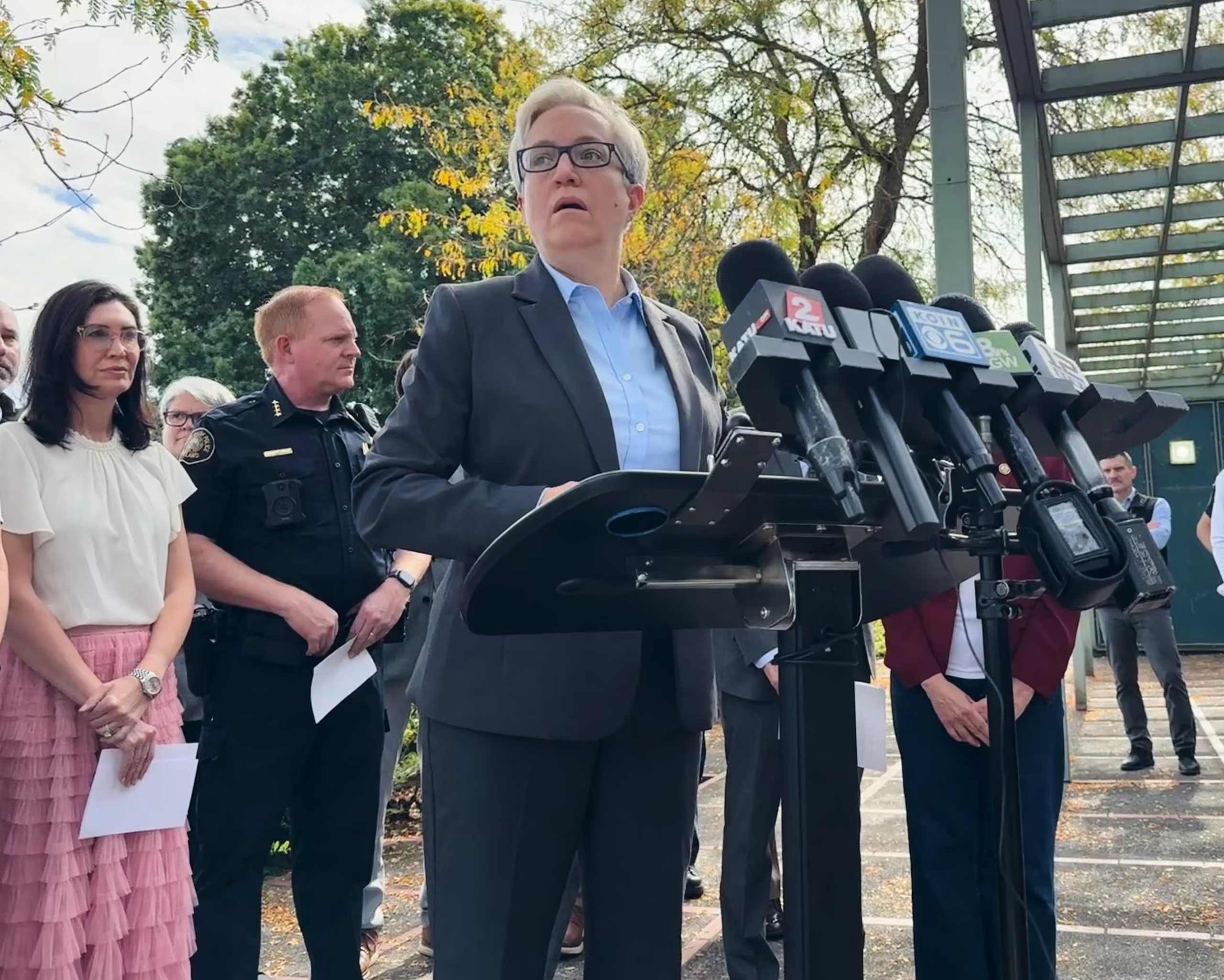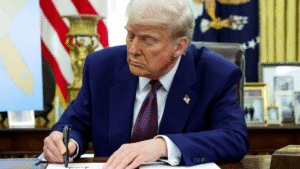Trump deploys troops to Portland — that headline alone signals how drastically this administration is recalibrating federal authority in cities across America. What began as an order to “protect” ICE facilities has expanded into a cascade of crises: from dueling narratives of unrest to mass firings in the Pentagon, legal friction with states, and a looming government shutdown.
Trump’s Portland Operation: Military Force on Domestic Soil
In a bold escalation, President Trump instructed the deployment of U.S. troops to Portland, Oregon, claiming the city had become “war-ravaged” and that Antifa and other domestic actors were targeting ICE facilities. He authorized “full force, if necessary” to protect federal property and personnel.
Yet in the streets of Portland, the reality did not align with the rhetoric. A Guardian on-site visit observed a calm city: farmers’ markets open, pedestrians jogging, and only four protesters near the ICE office. Oregon Governor Tina Kotek forcefully rejected Trump’s account, noting that there was no insurrection, no state of emergency, and no credible threat justifying military presence. Portland Mayor Keith Wilson echoed that sentiment: “The number of necessary troops is zero.”
The apparent dissonance between the president’s claims and on-the-ground observations has ignited accusations of executive overreach, and legal experts are already preparing challenges.
Internal Shakeups: The Pentagon Speaks, the DOJ Acts
Trump’s military deployment was only one thread in a larger tapestry of upheaval across his administration. Key among these disruptions: a surprise, high-level meeting at Quantico, Virginia, convened by Defense Secretary Pete Hegseth. Analysts see it as a warning shot to the military establishment—some officials anticipate firings or forced resignations if loyalty checks fail.
In parallel, the administration ousted a U.S. attorney in Sacramento who had urged immigration agents to adhere to legal limits on detentions—another flashpoint in the fight over immigration enforcement. Meanwhile, disturbing reports emerged from a newly opened immigration detention facility in California, where conditions were described by detainees as abusive and dire.
As part of a broader reshaping of federal oversight, Trump has also overseen mass firings across government watchdog roles. In January 2025, he abruptly dismissed at least 17 inspectors general, a move later deemed unlawful by a federal judge. That purge is only one element in the administration’s systematic reduction of oversight and internal accountability.
Constitutional Clash: States Push Back
The Portland deployment sets up a constitutional confrontation between federal power and state sovereignty. Oregon leaders have rejected the president’s justification and questioned his authority to send federal troops into a city without state consent. Many observers point to the Insurrection Act and Posse Comitatus Act as potential legal battlegrounds.
Critics argue that Trump is weaponizing emergency powers to suppress dissent and bypass democratic checks. State officials face pressure to make legal moves—filing lawsuits, invoking injunctions, or demanding clarity from courts about the limits of executive authority.
Beyond Portland: Other Flashpoints in the Trump Agenda
While Portland has captured headlines, the Trump administration’s tensions extend across multiple fronts:
- Government Shutdown Brinkmanship: With federal funding set to lapse on September 30, Trump is scheduled to meet congressional leaders to hash out a deal. His team is warning of sweeping workforce cuts if the shutdown isn’t resolved.
- Supreme Court Ruling on Foreign Aid Freeze: The U.S. Supreme Court temporarily upheld Trump’s freeze on nearly $5 billion in foreign aid, a key win in his battle for executive flexibility.
- Venezuela Strike Escalation: U.S. forces have struck Venezuelan vessels suspected of drug trafficking, marking an expansion of Trump’s military posture in Latin America.
- Microsoft Controversy: Trump publicly called on Microsoft to fire Lisa Monaco, its Global Affairs Chief and former deputy AG under Biden, alleging she was a security risk.
- Domestic Threat Crackdowns: A man was arrested in Texas for threatening violence at a Pride parade—another sign of a crackdown on domestic dissent. The Guardian
Strategic Observations: Why This Moment Matters
This convergence of military, political, and legal strategies suggests that Trump is actively redefining the boundaries of presidential power. By deploying troops domestically, purging oversight agencies, and threatening mass workforce changes, the administration is sending a clear message: dissent will face consequences.
For those who believe in constitutional constraints and democratic checks, this is a pivotal moment. State governments, courts, and civil society are being tested in their capacity to respond. If unchecked, the precedents set here could outlast this administration and reshape American governance.
Furthermore, the communication strategy—the blending of hyperbole, selective imagery, and social media mobilization—signals an emergent “executive-first” media approach, where the president sets the narrative and institutions scramble to react.
Conclusion
The Trump administration’s decision to send troops into Portland is far more than an isolated act—it’s the anchor for a broader, highly aggressive push toward concentrated executive control. Crushing dissent, reshuffling the military, nullifying oversight, and sidelining state actors—all of it is unfolding in real time. At stake is not just local politics but the very architecture of federalism and democratic norms.
Stay alert, stay informed, and keep pushing for accountability.
Subscribe to trusted news sites like USnewsSphere.com for continuous updates.





